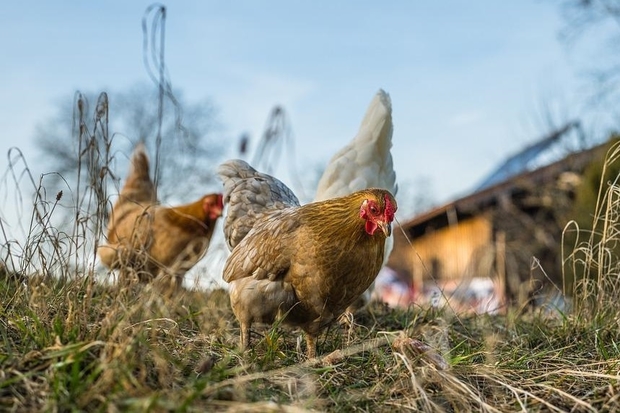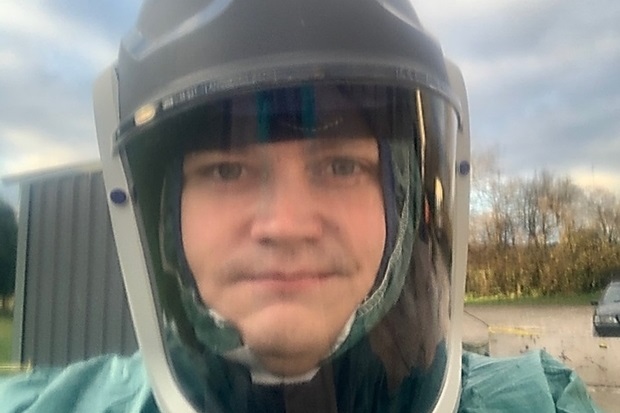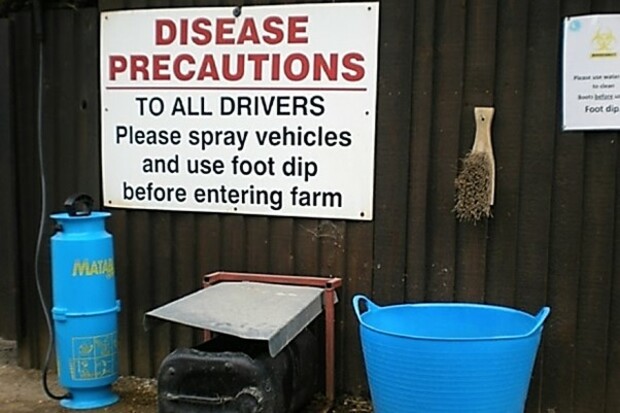
Notifiable disease has been identified on farm, prompting our Veterinary Field Epidemiology Investigators to attend the premises – but what happens next? APHA’s Ed Fullick reveals all.
If you are signed up to APHA’s animal disease alert service, the regular chime announcing yet another case might have tipped you off to the fact that the UK is still in the midst of the largest avian influenza (AI) outbreak in recent years. What you may not realise is that each of these confirmed outbreaks in commercial poultry premises requires an in-depth epidemiological investigation. This helps us to limit the spread of disease and help control the outbreak. So, what does a field epidemiology investigation actually involve?
After disease has been confirmed by one of our field vets, we have to find a suitably trained vet – referred to as a Veterinary Field Epidemiology Investigator (or VFEI if you indulge our love of acronyms). I trained as a VFEI when I worked in APHA’s Field Services. However, for the last four years I have worked in the Surveillance and Laboratory Services Department, contributing to animal disease surveillance in England and Wales, only poking my head out of my Veterinary Investigation Centre to investigate non-notifiable new and re-emerging threats.
For me, being a VFEI means being taken out of my post-mortem room, stripping off my lab coat and rubber apron, and donning my oh-so-fetching field service personal protective equipment before making my way onto farm.

On the farm
VFEIs are some of the first APHA staff to arrive on site once the outbreak has been confirmed, as we have to be there as soon as possible to get the information necessary to make decisions. As we arrive on farm, VFEIs must make sure that we abide by the strict biosecurity rules in place to prevent further spread of disease. The last thing anyone wants is any more cases of AI in the area!
So, once I am there, what happens next? Well, we ask a lot of questions. And I mean a LOT of questions. The bottom line of our job is to see where potential disease has come from and where it might have spread to. In order to do this, we need to have a detailed understanding of every process undertaken on the farm, going through each step involved. The exact specifics will vary depending on the farm type, but we will usually ask about things like animal and staff movements, egg collection, feed deliveries and so on. Well-kept production records and visitor logs are a benefit and help to quickly summarise the information for us, but are not always available.
Something we must always remember is that the farmers we are working with in these conditions are going through an incredibly stressful and often, very emotional time. Outbreaks of AI on farms have a huge impact on farmers’ businesses and their mental wellbeing, and yet we need to try and find out as much as we can from them during this difficult time.
I will always first explain I will likely ask what seems to be the same or similar questions several times throughout our conversation. This is not because I have forgotten the answer or that I am not listening, but because the human brain is not always the best at remembering things when stressed, and sometimes needs a couple of prompts! I also make sure they know I will be in contact again over the following week, as more questions always present themselves as you write these things up – again, it is not just me being forgetful!
After our initial discussion, we will go for a look round the farm. To coin a phrase by one of the VFEIs, it does help to be a “nosy parker” or at least someone with a bit of an interest in, well, everything! One of the things I love about being a VFEI is the variety of different farm set ups you get to see, and the novel solutions farmers manage to come up with. Every day is a school day as they say!

Throughout all my time on a farm I have to make sure I am paying attention, and do not get too engrossed in talking (always a risk with me!). After all, we need to make sure that what we have been told matches with what actually happens. While the farmer might say that they use the foot dips, do they actually use them as we move around site? What is the state of the disinfectant? Is it pristine (suggesting it is rarely used) or is it so full of dirt it is close to becoming mud? As we go around the farm, I will keep asking questions and chatting, muffled slightly by my respirator, finding out as much as I can, and often snapping away with a waterproof camera or phone. Pictures speak a thousand words in these reports.
The paperwork begins
At the end of a busy day, I will leave the premises under investigation in a clean and biosecure manner. Once on the clean side, it is time to give a quick call to my veterinary advisor to summarise the visit. I can then head home and start the write up. There are times where the government vet’s infamous love of paperwork is definitely true to life!
After I get home and get the laptop fired up and the kettle boiled, I will begin trying to piece everything together into a report. Often our focus will be establishing whether we think the potential AI virus (AIV) might have come in on, or have been spread by, a movement onto or off the site. At other times, there might be specific risk questions, like examining the likelihood of exposure of any pigs to the possible AIV that may also be located on the farm. These risk questions require their own veterinary risk assessment to be drawn up, and the risk of each step assessed in detail.
As I work away on things, I will get calls from our tracings team or perhaps the field vets, wanting to confirm information, or keen to check for any particular movements we need to worry about.
After a period with a plethora of phone calls, teleconferences, and late nights, I will have constructed a report detailing the comings and goings of the farm, complete with photos, timelines, and site maps. Having then worked through a few final forms summarising the details, I can finally sign off the case. Then, if I am lucky, I will get a week or so back in my cosy lab before the ominous chime of my work phone heralds another possible call to action.
Find out more
You may be interested in watching Ed’s presentation on veterinary scanning surveillance at APHA:

Recent Comments